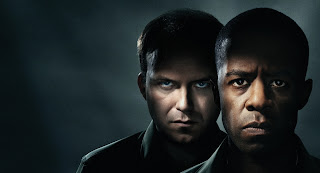At the 2003 Edinburgh Book Festival Douglas Coupland, on tour to promote
Hey Nostradamus!, asked his audience to help him recreate an installation piece he’d created in response to the shootings at Columbine. Coupland had been fascinated by something one of the first police officers on the scene had said to the press. The sound that met him in that empty cafeteria, he’d explained, was not one of eerie silence but a growing tide of noise as one by one the students’ mobile phone began to ring, to sing, from within their abandoned bags and backpacks. He likened the sound to a flock of tropical birds. In a tent in Charlotte Square Gardens, Coupland asked people to exchange numbers and ring the person sitting next to them, and gradually the tent began to chirp and trill, the sound building, slowly at first but rising in volume: an insistent, unanswered chorus.
In times of disaster we reach for our phones, seeking contact, reassurance, to be cradled by someone else’s voice. Hannah Jane Walker and Chris Thorpe, co-creators of
The Oh Fuck Moment, are interested in this impulse, in the way our relationship with these devices has reframed our ideas of intimacy and absence. Is it possible to be truly alone with a phone in our pocket? Are our relationships with the people we’re close to changing by the fact we never have to wait to share something with them, a joke, an idle observation, a piece of news that might upend their life forever?
We are encouraged on entry to leave our phones on, to remain connected, reachable. Walker and Thorpe actively welcome this potential for external intrusion and are cool with the poetry of their show being punctured by brief blasts of Beyonce and the blips and ribbets of incoming text alerts. If someone’s phone rings, they’re instructed to answer. “Sorry, I’m in a show.” “Yes. In a show. Right now.”
The audience are dispersed around the room on chairs, our phones in our hands and someone else’s number penciled on a piece of card. We are told to leave each other voice mails. As we key in the numbers and the first few phones begin to chirp I find myself picturing a field of invisible lasers, a kind of cat’s cradle of green beams connecting us all. I know how that’s not how it works but the image is appealing and, as phone after phone start to ring, I find myself visualising the lines that join us all together. One girl mistimes her call, answers instead, and ends up speaking to twin voices, the one in the room and the one in her ear. The lag between the two seems to unsettle her. “Hello?” she repeats anxiously, suspiciously. “Hello?”
Together we turn text messages into found poetry and experience the strange, transient intimacy of having a stranger’s words arrive in our inbox. Later Thorpe asks us to place our phones in a chalk circle in the middle of the room, a simple act which underlines what talismanic objects these thin, glinting things are to most people, digital tefillin, memory boxes. There they sit sun-spotted on the floorboards as he stalks among them like a crotchety giant. A couple of people get visibly twitchy, suffering from separation anxiety.
Walker’s more ambivalent relationship to her phone, her tendency to let texts go unanswered, her reluctance to respond instantly and immediately, is one I recognise. I often forget to switch mine on and rarely do I answer it unless I am somewhere indoors, somewhere quiet, somewhere safe. I do not relish the constant connection, the updates and alerts. I do not want to be locatable, traceable. I like to be able to shut the world up for a while, to be solitary, to focus on one thing without interruption, to hide in plain sight.
My scuffed seven-year-old Nokia looked so sad and small among the buckshot circle of sleek devices. As we create a wave of words, an undulating conga line of verse that rings the room, I start to wonder about interaction and this web from which I have chosen to exclude myself. Will this minor act of disconnection have increasing social consequences? Am I painting myself out of the world? Is the physic space gained worth the trade off, to be shut out, cut off from this process of continual engagement? On balance I still think it is, but, interestingly, with less certainty than I once did.
At one point Thorpe eyes one particular phone and snaps, stomps, shattering it underfoot. People gasp and whimper, than let out a collective sigh of relief when they realise it’s not their precious thing that has been Hulk-smashed into plastic debris. They’re safe.
And it’s a prop of course, a plant.
Except…on this occasion it’s not: something goes awry and it transpires that the battered, trampled phone actually does belong to a member of the audience, who is oddly accepting of this act of vandalism. This injection of accidental reality gives the performance an extra frisson. How would you react if your phone was suddenly erased, your connection suddenly severed? (Thorpe, to his credit, deals with his own oh-fuck moment swiftly and hugely apologetically, dashing off to secure a replacement immediately afterwards).
It’s easy thing to say, that a piece of theatre is thought provoking, but in this case I do sit in the sunny Drill Hall café afterwards and think about the piece and my response to it, studying my black box, thinking about the things it holds and wondering if I’d be brave enough to silence it for good.
















credit_Benjamin+Knapton_web.jpg)






